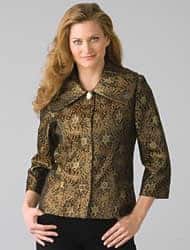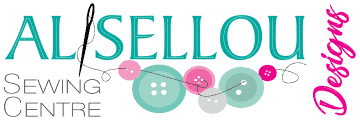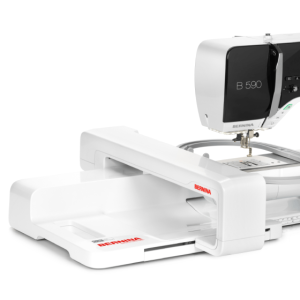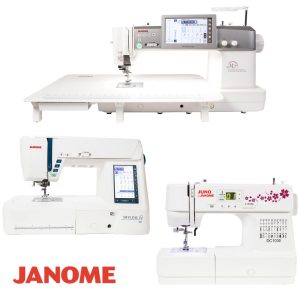If you are in any doubt about the Pattern sizing, please consult the Simplicity Website for details on the back of each Pattern Envelope. http://www.simplicitynewlook.com
WHAT PATTERN SIZE ARE YOU?
One of the reasons that people sew is to get a garment that fits perfectly. People are not necessarily created equal – they come in all shapes, heights and sizes. Like ready-to-wear clothes, sewing patterns come several different sizes to fit all of these different bodies. Patterns can come in numbered (10-12-14, etc.) or lettered (S-M-L, etc.) sizes, just like at retail. But the similarities in sizing end there, so it’s very important to remember:
Pattern sizes are not the same as retail clothing sizesEver try on similar skirts from two different brands, both marked with the same size, only to find that they fit differently? That’s because each brand or manufacturer decides for itself what a size 8 is, what a size 10 is, and so on and so forth. Since each brand makes its own decision about sizing, there is no across-the-board standardized sizing at retail for pattern companies to match up to. This is why you can’t just buy a pattern in the same size that you normally buy when shopping in a department store or boutique.Patterns have consistent, standardized sizing from pattern brand to pattern brand. This sizing is based off of body measurements that all pattern companies have agreed to, which haven’t changed with the passage of time. So believe it or not, a pattern size 10 from thirty years ago is based off of the same body measurements as a pattern size 10 today.Since you can’t try a pattern on, getting the correct size is the #1 priority. Otherwise you wind up with a finished product that doesn’t fit, and who wants to put in all that time and work for nothing? A little extra effort and research to get the right size from the beginning will save you a lot of time and heartache later!
Body Measurements
Getting the correct body measurements is key, so it’s important to take your body measurements carefully. It may be difficult to do this by yourself, so you may want to enlist a trusted friend to help.When taking your body measurements, wear the undergarments you normally wear for the most accurate results. Use your flexible tape measure, and hold it at each body point so that it’s comfortably snug. If the tape is cutting into your flesh, it’s too tight – if you have room in between the tape and your body, it’s too loose.To get detailed instructions on taking and recording your body measurements correctly, click here – print out the handy “cheat sheet” to fill in, so you can have your measurements at your fingertips when you’re ready to buy your pattern.
Getting Your Starting Pattern Size
To figure out your starting pattern size, compare your body measurements with the ones on our Measurement Charts. Match as many measurements as possible to find your pattern size. Don’t panic if the size number you come up with is higher than the one you buy at retail – remember, they are not the same thing! This pattern size is your starting point.
Let’s Talk About Ease
What is ease, anyway? Ease is the difference between the body measurement and the finished garment’s measurement at the same body part. To get a better idea of what we mean, take one of your t-shirts (not a really tight one) and lay it flat on a table. Measure the t-shirt at the bust and double the number you get – doubling it gives you the complete bust measurement of the t-shirt, including front and back. Compare this measurement to your bust body measurement. You’ll find that if you’ve taken all of your measurements correctly, the t-shirt bust is larger than your actual bust. The extra is the ease of the t-shirt.There are two types of ease – Wearing Ease and Design Ease:Wearing ease is the amount needed to actually wear the garment, so you can lift your arms, sit down, etc. Some people prefer more wearing ease, for a looser fit; some prefer less wearing ease, for a more snug fit. This is strictly a personal choice.Design ease is the amount given for a specific design to get a certain look.
This jacket has less design ease, so the finished look is slim and more form-fitting.

This jacket has more design ease, to maintain a 1950’s, retro-inspired swingy silhouette.

The illustration below shows the comparison between all three measurements:

One last note about ease: Fabrics make a difference. Some fabrics have more give than others, so garments made out of these fabrics need less ease than others. Some examples of these fabrics for comparison:
More Give – Needs Less Ease:
- Jersey Knits
- Loose-Weave Linens
- Crinkled Fabrics
- Stretch Woven Fabrics
Less Give – Needs More Ease:
- Tight-Weave Cottons and Linens
- Denims
- Wools
- Satins
Using the Back of the Envelope to Help Choose a Pattern Size
Once you’ve chosen a pattern style and have your starter size, it’s time to refer to the back of the pattern envelope to narrow down your sizing even further. The back of the envelope is a great tool, but like any other tool, you have to know how to use it properly. Let’s break it down:

Title: this acts as a description of the pattern, including the size range and all of the garments included in the pattern. This simple line of text can give you extra clues that let you know what the fit is like – for example, if a top is labeled “pullover”, that top needs more ease to be able to pull over the head without a zipper or button opening.Fabric Suggestions: this is an actual list of the fabrics suggested for each item in the pattern, which also gives a clue about fit. Garments that are recommended for knits only are given very little wearing ease, so they are usually more close-fitting.Body Measurements: these are the actual body measurements for each size. These are put on the back of the envelope for quick reference, allowing you to see at a glance if the pattern comes in a size that’s right for you.Garment Measurements: these are the measurements of each finished garment included in the pattern, in each size. The measurements for each garment are taken at the widest fitting point – dresses, tops and jackets are measured at the bust, while skirts and pants are measured at the hip. These finished garment measurements include the maximum amount of ease given for each garment. Since people prefer different amounts of ease in their clothes, these are important numbers to use when choosing your pattern size on a pattern-by-pattern basis. Here’s how it works:Beginning with your starting size, look at the finished Garment Measurement of the item you are planning on making, and compare it to your Body Measurement at the same point. It may be easier to take your tape measure and put it around your body, matching the Garment Measurement. See how much room you have between your body and the tape measure. Too much for you? Go down a size. Too little? Go up a size. Somewhere in between? Go with the larger size, because it’s easier to adjust a larger size than a smaller one.
Figures Types and Special Sizes
Once you’ve figured out your pattern size, there is one more thing that you may want to consider, your figure type. Simplicity produces patterns for several different figure types, including adults and children. Here are descriptions of the most commonly confused figure types:

Misses’ for an adult female figure that is well-proportioned and well-developed in all body areas. Misses’ sizes are proportioned for 5’5” to 5’6” tall.Miss Petite like in ready-to-wear, Miss Petite refers to a proportion for 5’4” tall and under. The torso for a Petite size is also 1” shorter than that of the Misses’ size. This is important, because many people don’t realize that Petite is not just about height, but an overall shorter proportion. If you are truly Petite, just lopping off the excess length at the hem is not going to do it! Also, don’t make the mistake of thinking that Petite only applies to smaller sizes; there are larger-sized women out there that are still Petite.Simplicity’s Misses’ and Miss Petite range of sizes run as follows:
4 – 6 – 8 – 10 – 12 – 14 – 16 – 18 – 20 – 22 – 24 – 26Women’s or Plus Sizes a larger, more fully-fashioned mature adult female figure. Women’s sizes are proportioned for 5’5” to 5’6” tall.Women’s Petite or Plus Petite a larger, more fully-fashioned mature adult female figure proportioned for 5’4” tall and under. Like Miss Petite, the torso is 1” shorter, so the same basic Petite rules apply.Simplicity’s Woman’s/Plus and Woman’s/Plus Petite range of sizes run as follows:
18W – 20W – 22W – 24W – 26W – 28W – 30W – 32WJuniors’ for the Young Miss figure, about 5’2” to 5’5” in height. This figure, not being fully matured, has slightly fewer curves than the Misses’ size.Simplicity’s Junior range of sizes runs as follows:
3/4 – 4/5 – 5/6 – 7/8 – 9/10 – 11/12 – 13/14 – 15/16 – 17/18Junior Plus for a larger, more fully-fashioned Young Miss figure, proportioned for 5’2” to 5’5” in height.Simplicity’s Junior Plus range of sizes runs as follows:
15+/16+ – 17+/18+ – 19+/20+ – 21+/22+ – 23+/24+ – 25+/26+

 Bernina
Bernina Janome
Janome